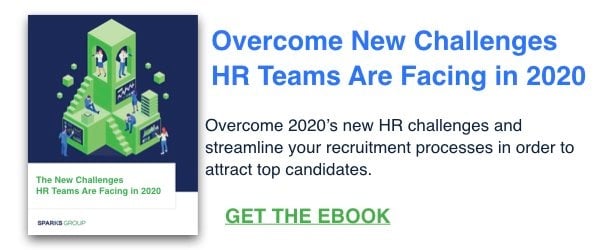
Key Considerations for a Return to Work (RTW) Plan Include:
1. Compliance Requirements
First, employers should determine which regulations apply to them, and create an approach for RTW. This may encompass federal regulations that apply to all employers, such as guidelines provided by the Centers for Disease Control, or ones set by your respective state; or there may be industry-specific regulations as well. Get a good overview of compliance requirements first, to make sure that they are built into your RTW plan from the start.
In general, if two different regulations outline a similar approach – say, to personal protective equipment – employers should comply with the most restrictive of the two to ensure compliance.
2. Phased Approach
Depending on the size and structure of your company, you may consider implementing a phased approach; taking small steps toward returning to full capacity rather than making the change all at once. The benefit of a phased approach is that it allows the organization to implement activities in a measured, thoughtful manner, to keep off-the-cuff reactions to a minimum, and to monitor, adjust, and improve the workplace before every employee is called back to the office.
Related Reading: Creating a Telecommuting Policy for Long-Term Success
3. Employee Needs
When employees are released to return to work, a company should address some key points in the RTW plan, including:
- Which employees may return to work?
- Which employees must return to work?
- Which employees are at higher risk for severe illness?
- Which positions may be considered for continued work-from-home?
Further, the return to work plan should include guidance around ongoing issues. Think about how employees exposed to COVID-19 will notify the company – will they be required to self-quarantine, for how long, and what are the conditions of future RTW? How will you handle employees with caretaker responsibilities at home?
4. Office Accommodations
For those employees that do return to work, will the company take any steps such as:
- Reconfiguring office layout to facilitate social distancing
- Changing occupancy limits on conference rooms and common areas
- Adjusting office hours or staggering shifts to avoid crowding/rush hour
- Increasing frequency of cleaning / sanitizing of office space
- Promoting healthy hygiene practices, through signage, notification or training
- Limiting on-site visitors and client meetings
- Continuing virtualization of activities that can be conducted remotely such as job interviews and team meetings
- Providing PPE, or supplies such as tissues and hand sanitizers
The answers to each of these questions should be clearly outlined in the return to work plan, and the procedures put in place to support them.
5. Conditions of Employment
Think about adjusting expectations for employees during the upcoming period. If employees are required to travel for their jobs, they may be unable to do so. Sales people may not be able to meet a commission structure that was created pre-COVID. Other employees may find their goals and objectives need to be adjusted as well, to better reflect the reality of the current business environment.
Review other policies as well. Addressing work hours and scheduling is important, as is scheduled PTO. Perhaps employees should follow a different procedure for PTO, or restrictions against carrying PTO over to the next calendar year should be lifted.
Finally, be certain that while your policies are flexible enough to accommodate individual needs, they are also applied in a standardized manner to protect the company against claims of discriminatory or unfair treatment.
Related Reading: Understanding How the Families First Coronavirus Response Act Impacts Small Businesses
6. Be Empathetic
There’s no question that this has been a difficult time for everyone – individuals, schools, families, businesses – and that understanding should be reflected in the interactions of business and employees during the return to work process. Prepare to speak with employees about the reasons for different policy changes and accommodations, as questions will probably arise. As much as possible, be flexible and responsive to changing employee needs, concerns, and expectations.
COVID-19 brought unprecedented challenges for businesses, and in an unpredictable environment, it can be difficult to know what step to take next. For more information on how companies can navigate the new COVID and post-COVID-19 business environment, check out our ongoing informational series.






